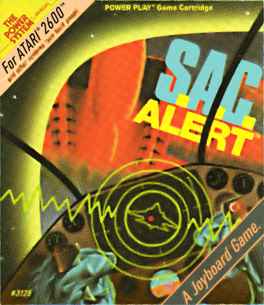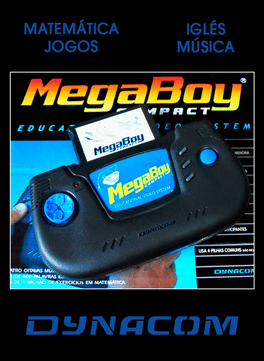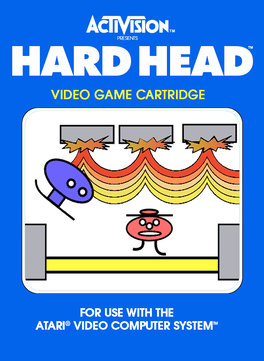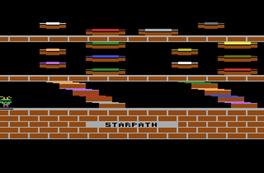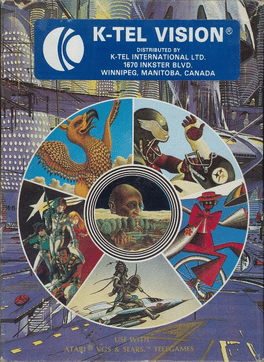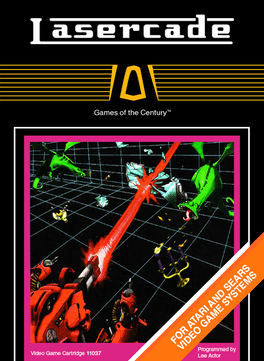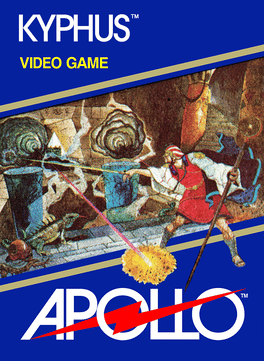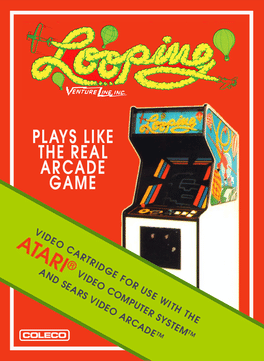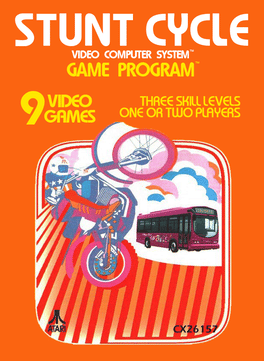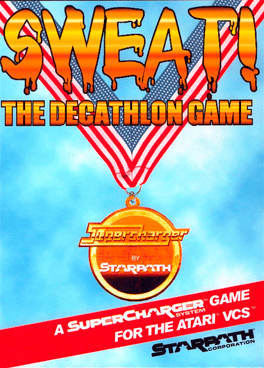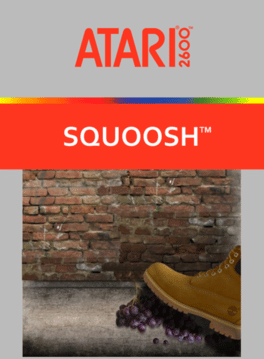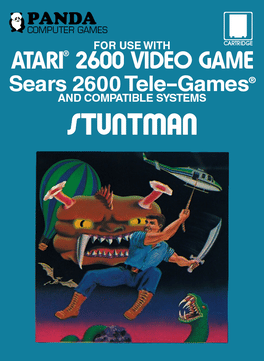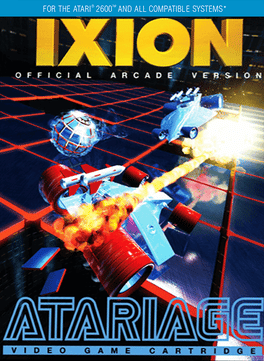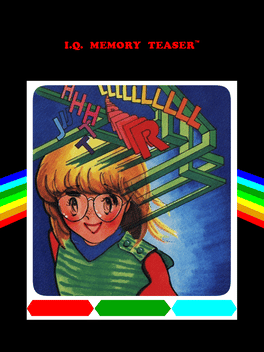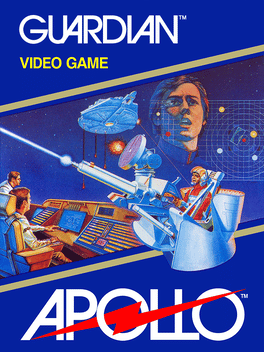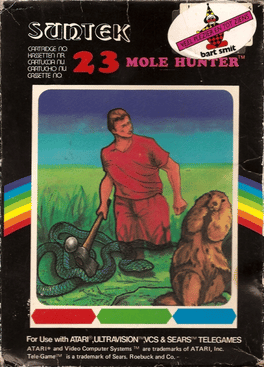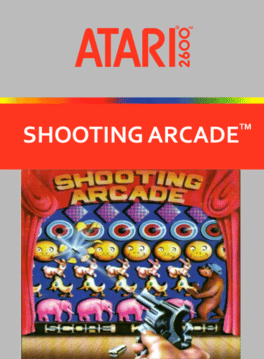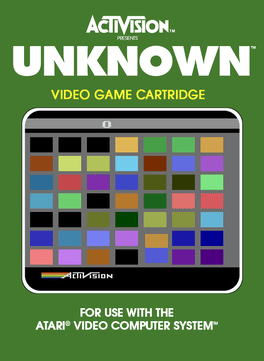Most Popular Atari 2600 Games - Page 8
-
S.A.C. Alert
Both a NTSC and PAL prototype version have been found and the game appears to be complete. It was originally planned to be a cassette game for the Power Module peripheral, and is one of the games designed for use with The Joyboard controller. It was later planned to be one of four games on the fifth Power Play Arcade cart. According to a press kit, this was to be a first person flying simulation with a true 'through the cockpit' viewpoint and featuring both land and sea game variations. Catalog description: 'You're guiding your plane through a routine surveillance mission when suddenly, you're surrounded by enemy bombers and fighters. But they've seen you first. And you'd better think fast. You squeeze off a few rounds, just to let them know it isn't going to be easy. You pull back hard on the stick, and head straight for the sky. It's not going to be easy for you either...' -
MegaBoy
1991
MegaBoy
1991
This is the educational cart for the MegaBoy console, a handheld Atari 2600 clone. It contains 16 games plus the contents of the MegaBoy compact. This console was released in Brazil and many were sold to schools. -
Hard Head
Along with UAG#1/SCRMNN this mysterious prototype was found in a salvage yard in 1998 by Ben Liashenko. For many years we did not know the name of this game since the label that once existed had long since fallen off. However in 2017 another copy of this game appeared on Ebay UK complete with a label. We now know that the game is called Hard Head. Hard Head plays somewhat like Atari's Save Mary. However this time instead of building a tower by dropping bricks from the top of the screen, you must bump blocks from the bottom of the screen. -
Going Up??
Talk about your unknown prototypes. Going-Up?? came suddenly out of the blue when it was dumped and quietly released by Digital Press. This previously unknown game by Starpath caused quite a stir when the first screenshots were released. -
Spider Maze
1982
Spider Maze
1982
This rare game from K-Tel Vision was probably sold exclusively in Canada. It is easier to find in PAL format, as it had more distribution overseas. Game play is similar to Donkey Kong. The player controls an "adventurer" and has to reach the treasures the evil octopus hid away. Each level consists of a series of platforms that are interconnected by ladders. The only action the player can take besides moving around is pressing fire to make the hero jump. This is necessary to get across the gaps between some of the platforms. At the same time, the player has to avoid the smaller octopi as well as clouds of poison gas which move around the screen randomly. Once the player reaches one of the treasure chests at the top of the screen they won the level and a new round starts. Game can also be played by two players in an alternating fashion. -
Lasercade
The first thing you're bound to notice upon booting Lasercade is how nice the graphics look. It's hard to believe that the 2600 can do a 3/4th perspective shooting game, but Lasercade is the proof. The goal of the game is to shoot all the targets in the upper section of the screen before time runs out (that's original). However, while you can just start shooting willy nilly, you should probably take a second to look at the funny little targets in the middle section of the screen. In the middle section of the the screen there are three rotating mirrors. As you may have guessed, these mirrors can play havoc with your laser if you're not careful. If you shoot a mirror while it is facing you, it will reflect the laser back at you and you will lose some time and be momentarily stunned. However if you shoot the mirror while its back is to you, you can destroy it so it won't bother you until the next round. While this may sound a bit complicated, it's often best just to ignore the mirrors and shoot at the targets themselv -
Kyphus
Over the years Apollo has released some strange games. From the airline luggage simulator Lost Luggage to the egg throwing antics of Wabbit, Apollo was never afraid to release something different. Therefore it's no surprise that when a new unknown Apollo prototype surfaced, it featured some interesting gameplay. However Kyphus may be the strangest game from Apollo yet... Looking a little like a cross between Racquetball and Space Cavern, Kyphus is an odd game in which the player must maneuver a dumpy looking guy through a pseudo-3D maze of rooms avoiding what appears to be a glowing cloud that shoots lasers, while being followed by a multi-colored robot that just might be a monkey in disguise. Like I said, this game is weird!. Unfortunately, this prototype is very incomplete. There appears to be no collision detection, few sounds, and almost no gameplay. The only thing one can really do in this prototype is to move run from room to room, although with no collision detection implemented there is no threat from the r -
Looping
Based on the obscure 1981 Venture Line coin-op of the same name. It's unknown why Looping was never released since the game seems to be finished and was even advertised. One reason may be the high difficulty of the game which really takes away most of the fun. As the game title suggests, this game involves looping. By looping I mean that your plane can only move in circles instead up the normal up, down ,left, right movement of most games. By pushing up or down, your plane will begin to arch and start its loop (pushing left and right has no effect). Normally this wouldn't be a huge problem, but your plane also moves very VERY fast, so it's quite easy to crash into the ground or another obstacle before your can complete your loop. One interesting thing to note is that if your plane hits the top of the screen it will nosedive straight down. While at first this may seem like a major inconvenience, it can be used to your advantage if you're crafty enough. The cart, box and manual are reproductions from 2003. -
Stunt Cycle
In 1980, Atari programmer Bob Polaro began to develop a Stunt Cycle port for the Atari 2600 using full color graphics. By the time it was completed, Atari had decided to turn it into a television tie-in game for the Dukes of Hazzard franchise instead. This game never progressed beyond the prototype stage and was not officially released. Bob Polaro independently released 50 copies of Stunt Cycle in 2003. -
Sweat! The Decathlon Game
Sweat! is an unreleased game that was to be Starpath's version of Activision's Decathlon for the Supercharger cassette-based peripheral add-on. Given the fact that the Supercharger allowed for more memory and larger games, Sweat! probably would have been an amazing game had it been completed. Of course this never happened as the video game market was crumbling rapidly and people weren't spending money on regular video games, much less games that required special hardware. It was around this time that the financially troubled Starpath merged with Epyx. Most of Starpath's programmers transferred over to Epyx and used Sweat!'s game concept to create Summer Games. -
Squoosh
Squoosh is an unfinished prototype of an action game from Apollo. From it's appearance, it seems to have something to do with smashing grapes with a giant press. -
Stunt Man
1983
Stunt Man
1983
Players take on the role of a stuntman who has to escape various dangers and make it to a flying helicopter. Stuntman is broken down into three timed stages. The first stage has the stuntman climbing ropes in order to get to a helicopter while also dodging flying birds. The second stage has the stuntman climbing ropes again but now arms him with a sword and requires him to defeat the flying devilfaces before he can make his escape. The third stage has the stuntman climbing ropes again dodging enemies, but he must also grab a hold of all of the balloons on the stage before he make his getaway. The stages then repeat in this order two more times with the later stages increasing the challenge by adding more enemies. After completing the nine stages, the game repeats at the next highest speed level. There are six speed levels in total and the desired speed level may be chosen from the beginning also. -
Ixion
Ixion is a port of the unreleased 1983 Sega coin-op of the same name, Ixion is an interesting game that doesn't seem to play like anything else in the 2600 library. Your goal in Ixion is to grab the five white squares scattered across the screen and spell the word Ixion before your time runs out. At the start of each level only certain squares are visible, and to get around more easily you must first reveal the missing squares. To reveal the missing squares, the player must move a brown sphere over an empty square. This sphere is normally stationary, but it can be moved by shooting or ramming into it. This sends the sphere bouncing around the screen, revealing squares and destroying enemies in its travels. After a short time of bouncing around the sphere will stop, requiring the player to move it again to reveal more squares. Learning how to move the sphere where you want is the key to mastering Ixion. Also moving around the game grid are enemy drones, which will attempt to destroy your ship. Unfortunately, their s -
I.Q. 180
1983
I.Q. 180
1983
The title screen shows us 25 letters of the alphabet (where did the Z go?) and 5 symbols, representing little figures. If you press F1 to start, you will see the first screen with all the letters and symbols randomly presented and numbered from 1 to 30. If you move the blinking cursor with your joystick down (in the direction of the red arrows), the second screen will appear with the same letters and symbols also numbered 1 to 30, but in a different order. You will also be confronted by a horrible tune. While the tune is playing, you will have to memorize the positions of the letters and symbols of both the screens by looking at their corresponding number (use your joystick to move the cursor in the direction of the arrows to let the other screen appear) or just write down the thirty letters and symbols of one screen on a piece of paper. When the tune stops, all the letters and symbols of both screens will change into little squares and a timer will count down from 1000 to 0. You have to memory match the same lette -
Guardian
1982
Guardian
1982
Guardian is an arcade action game for one or two players. In an intergalactic war, an enemy ship called Dromeda is attacking your home planets and you need to defend them! The planets are located at either the top or the bottom of the screen, and are defended by a shield. Dromeda is in the middle of the screen, and will be launching explosive devices at the planets. You control a spaceship which is the last hope to save the planets. Unfortunately, your ships lasers are unable to reach Dromeda, so you you must shoot the explosives as they come in. If you miss any explosives, they will destroy part of the shield. If a large enough hole forms, an explosive could get through and destroy an entire planet. The game ends when all of your planets have been destroyed. -
Mole Hunter
1983
Mole Hunter
1983
Mole Hunter is a whack-a-mole-style game for the Atari 2600. You control a man with a hammer, who seems to be in the desert, and is surrounded by holes. Periodically the holes will light up and then some sort of rodent appears popping out of it, and you need to smash him back down to his burrow. If you don’t hit him in time, then he will escape and run around the screen trying to bite you. Hitting a rodent gives you 100 points and if he touches you then you will lose points. You also have to be careful not to fall down a hole as you run around the screen, if you do, then you will lose one of your 3 lives. You are given 20 minutes to get the highest score possible. When the times run out, or you lose all 3 lives, it’s game over. -
Heart Like a Wheel
Programmer Jim Collas confirmed that this game was called Heart Like a Wheel and was based on the 1983 movie of the same name. 20th Century Fox had contracted a company called Micro Computer Technologies to create a game to tie in with the movie. Unfortunately the movie didn't do so good and the game was cancelled. Heart Like a Wheel was never completely finished before being cancelled. While the core gameplay is there, the prototype is missing some finishing touches such as correct level progression, the races starting automatically, and more tracks. Although Collas never went on to develop any more VCS games, he had a long and successful career in the computer industry including becoming President of Amiga during Gateway’s ownership of the brand. -
Secret Agent
You, the Secret Agent, must catch the falling agent items, like U.S. documents, money cases and money bags, while avoiding the undesirables, like bugs, grenades and guns. After a time, a tone will sound. This is when the boats on the water below you will stop moving and you need to get above them and 'make the hand off'. Be careful, though, for although the boats stopped moving, the falling items have not. In two-player games, the players alternate. Secret Agent was the last Data Age game to be completed, but the crash forced them out of business before it could be released. -
Shooting Arcade
Shooting Arcade is one of only two Atari 2600 games to use the Light Gun (Sentinel being the other), but was never released. Interestingly, it appears that Shooting Arcade was not developed in the US, but rather in Mexico by a company called Heuristica. How Axlon was involved is unknown, but they may have simply sub-contracted the game out to Heuristica instead of doing it themselves. So why wasn't Shooting Arcade released? No one knows the true reason, but one possibility is the flawed targeting system of the Light Gun. Another possibility is the late date of the game (1989). It's doubtful that an Atari 2600 target shooting game would have sold in great numbers, and this is probably why Atari went with the more action oriented light gun game Sentinel instead. -
SCRMNN
While the prototype was labeled SCRMNN, the actual title of this game is currently unknown (some have speculated that the name on the label might stand for "Screen Manipulation"). Found in a salvage yard in 1998 by Ben Liashenko, the identity of this mysterious Activision prototype has eluded collectors for years. This prototype plays like a cross between a Rubik's Cube and the old sliding tile puzzle game. The goal of the game is to line up all the colors in each row from light to dark. If you've done it correctly the board should look like the start-up screen with the colors descending from red to purple. However lining up all the colors is easier said than done due to the unique way the squares move across the board. When you move your square up or down a row or column, the last square in that row will move behind your square's new position. For instance if your square is the light green one (center of the row), and you move it left it will result in the last square in the row (the light blue one) moving behind
